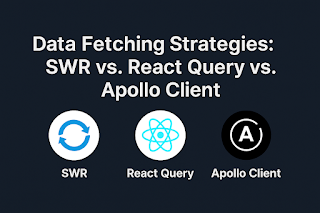Front-End Performance Monitoring with Web Vitals & Lighthouse

In today’s fast-paced digital landscape, performance isn’t just a luxury — it’s a necessity. A delay of even 100 milliseconds can impact user experience and conversion rates. That's why monitoring front-end performance is crucial for any modern web application. Two powerful tools in the performance monitoring arsenal are Web Vitals and Google Lighthouse . Let's explore what they are, how they work, and how you can leverage them to ensure your applications stay lightning-fast and user-friendly. What Are Web Vitals? Web Vitals is an initiative by Google to provide unified guidance on essential metrics that matter most to user experience. The Core Web Vitals: Largest Contentful Paint (LCP): Measures loading performance. Target: < 2.5s First Input Delay (FID): Measures interactivity. Target: < 100ms Cumulative Layout Shift (CLS): Measures visual stability. Target: < 0.1 These metrics focus on actual user perception and interaction, helping developers prioritize real-...




